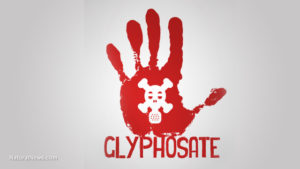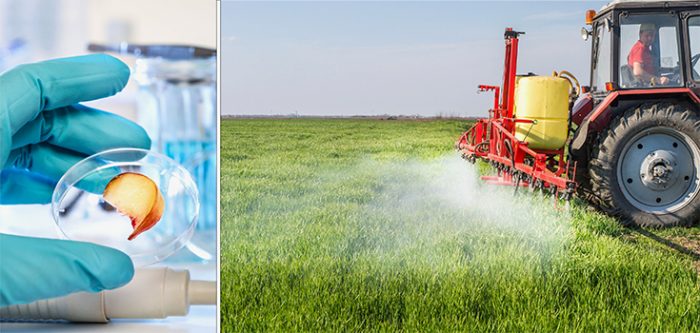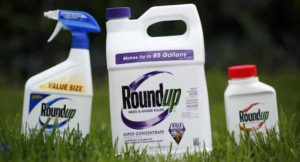 On October 1, the U.S. Food and Drug Administration (FDA) released the final results of a “special assignment” that tested for levels of glyphosate, the weed-killing chemical found in the blockbuster herbicide Roundup. They also posted results for a competing herbicide, called glufosinate, in corn, soy, eggs, and milk during the fiscal year 2016. [1]
On October 1, the U.S. Food and Drug Administration (FDA) released the final results of a “special assignment” that tested for levels of glyphosate, the weed-killing chemical found in the blockbuster herbicide Roundup. They also posted results for a competing herbicide, called glufosinate, in corn, soy, eggs, and milk during the fiscal year 2016. [1]
The agency did not test oats and wheat products. [1]
As we reported in July of last year, the FDA agreed to test certain foods for glyphosate residues following the U.S. Government Accountability Office’s criticism of the agency for failing to include the controversial chemical in annual testing programs which analyze “less-used” chemicals in foods.
The so-called special assignment reviewed 7,413 samples, including 6,946 human foods and 467 animal foods for residues of 711 pesticides and industrial chemicals.
Here is what the FDA found:
Glyphosate residues were detected in 63% of the corn samples and 67% of the soy samples at “non-violative levels.” In other words, the levels detected were in compliance with the U.S. Environmental Protection Agency’s (EPA) tolerance levels.
Glufosinate was detected in 1.4% of the corn samples and 1.1% of the soybean samples, also within legal limits.
* No residues of either pesticide were found in the milk and egg samples.
FDA Commissioner Scott Gottlieb said in a press release:
“Like other recent reports, the results show that overall levels of pesticide chemical residues are below the Environmental Protection Agency’s tolerances, and therefore don’t pose a risk to consumers.”
 However, as the Environmental Working Group (EWG) points out, the FDA did not test oats or wheat, the 2 main crops where glyphosate is used as a pre-harvest drying agent, which has resulted in Cheerios and some granola bars being contaminated with the chemical, the group’s own testing revealed. [2]
However, as the Environmental Working Group (EWG) points out, the FDA did not test oats or wheat, the 2 main crops where glyphosate is used as a pre-harvest drying agent, which has resulted in Cheerios and some granola bars being contaminated with the chemical, the group’s own testing revealed. [2]
Olga Naidenko, Ph.D., Senior Science Advisor for Children’s Environmental Health at EWG, said:
“FDA’s failure to test for glyphosate in the foods where it’s most likely to be found in inexcusable.”
Testing for residues in milk and eggs was a pointless venture, as Monsanto’s (now Bayer) own analysis shows that glyphosate does not transfer to either food.
Naidenko said:
“We are not saying that parents should stop feeding their children oat-based foods. But parents should not have to worry that these foods have residues of an herbicide linked to cancer.”
Henry Rowlands, the founder of The Detox Project, which has developed a “Glyphosate Residue Free” certification program, said the fact that glyphosate has been detected by EWG and The Detox Project is proof that the FDA needs to cast a wider net when it comes to residue testing. [3]
“The FDA should be concentrating on testing all crops/ingredients that are desiccated using glyphosate, these include wheat, oats, lentils, peas, soybeans, corn, flax, rye, triticale, buckwheat, millet, canola, sugar beets, sunflowers, and potatoes.”
Rowlands said he is not convinced that the glyphosate residues detected by the FDA in corn and soy samples are actually safe, despite falling within the EPA’s established legal limits.
“In my opinion, some of the levels are remarkably high [although they are well below EPA thresholds].
In 1999, the glyphosate MRL [maximum residue level] for soybeans was raised from 0.1 mg/kg (100 ppb) to 20 mg/kg (20,000 ppb) in the USA and Europe. Likewise, in 2004, the glyphosate MRL for soybeans was raised from 0.2 mg/kg (200 ppb) to 10 mg/kg (10,000 ppb) in Brazil (Bohn et al., 2014). Bohn et al (2004) suggested that the MRL adjustments were made in response to actual observed increases in the glyphosate residue detected in GM HT soybeans.”
Both the U.S. Department of Agriculture and the FDA routinely test thousands of food samples for residues of commonly-used pesticides. Frustratingly, glyphosate is not one of them. Regulators have refused to test for glyphosate for decades because the government considers it safe. [1]
Sources:
[1] EcoWatch
[2] Environmental Working Group
Written by Julie Fidler for The Natural Society ~ October 3, 2018

Also part of the “typical American diet”
FAIR USE NOTICE: This site contains copyrighted material the use of which has not always been specifically authorized by the copyright owner. We are making such material available in our efforts to advance understanding of environmental, political, human rights, economic, democracy, scientific, and social justice issues, etc. We believe this constitutes a ‘fair use’ of any such copyrighted material as provided for in section 107 of the US Copyright Law. In accordance with Title 17 U. S. C. Section 107, the material on this site is distributed without profit to those who have expressed a prior interest in receiving the included information for research and educational purposes. For more information go to: http://www.law.cornell.edu/uscode/17/107.shtml“
